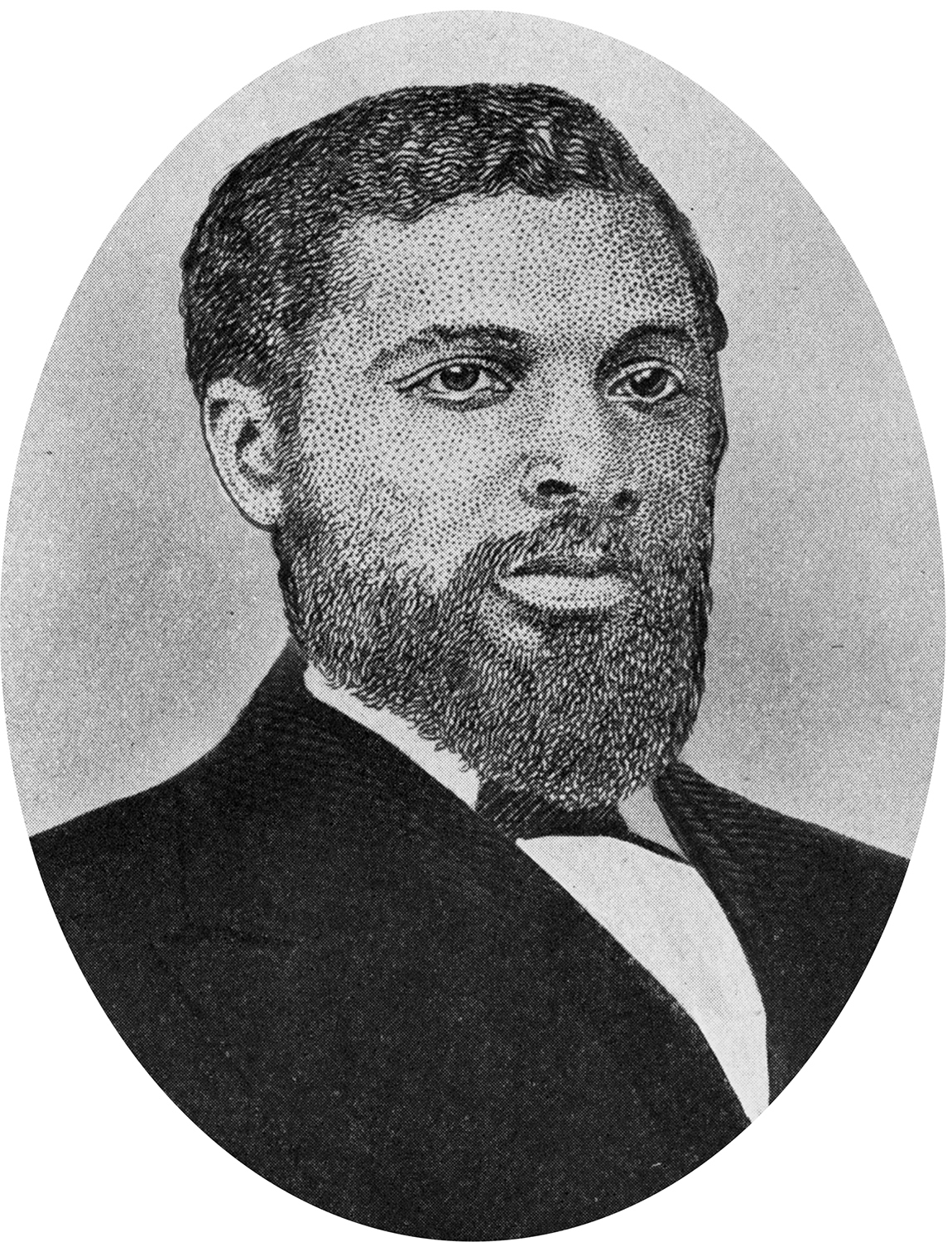Introduction for Chapter 16
16. Reconstruction, 1863–1877

CARPETBAG A carpetbag was a suitcase made from carpet. “Carpetbagger” was a derogatory name for rootless adventurers, which critics of Republican administrations in the South hurled at white Northerners who moved south during Reconstruction. © Elemental Studios/Alamy.
CONTENT LEARNING OBJECTIVES
After reading and studying this chapter, you should be able to:
- Identify the challenges facing reconstruction efforts.
- Describe President Johnson’s reconstruction plan and the ways in which it aligned and differed from Lincoln’s.
- Recount the significance of the Fourteenth Amendment, and why President Johnson advised southern states to reject it. Explain the terms of radical reconstruction and how Johnson’s interventions led some in Congress to seek his impeachment.
- Describe the provisions of the Fifteenth Amendment, and explain why some women’s rights advocates were dissatisfied with it.
- Describe how congressional reconstruction altered life in the South. Explain why the North abandoned reconstruction, including the role of Grant’s troubled presidency and the election of 1877 in this abandonment.

James T. Rapier In 1874, when Representative James T. Rapier spoke before Congress on behalf of a civil rights bill, he described the humiliation of being denied service at inns all along his route from Montgomery to Washington. Elsewhere in the world, he said, class and religion were invoked to defend discrimination. But in America, “our distinction is color.” Alabama Department of Archives and History, Montgomery, Alabama.
IN 1856, JOHN RAPIER, A FREE BLACK BARBER IN FLORENCE, ALABAMA, urged his four freeborn sons to flee the increasingly repressive and dangerous South. James T. Rapier chose Canada, where he went to live with his uncle in a largely black community and studied Greek and Latin in a log schoolhouse. In a letter to his father, he vowed, “I will endeavor to do my part in solving the problems [of African Americans] in my native land.”
The Union victory in the Civil War gave James Rapier the opportunity to redeem his pledge. In 1865, after more than eight years of exile, the twenty-seven-year-old Rapier returned to Alabama, where he presided over the first political gathering of former slaves in the state. He soon discovered, however, that Alabama’s whites found it agonizingly difficult to accept defeat and black freedom. They responded to the revolutionary changes under the banner “White Man—Right or Wrong—Still the White Man!”
During the elections of 1868, when Rapier and other Alabama blacks vigorously supported the Republican ticket, the recently organized Ku Klux Klan went on a bloody rampage. A mob of 150 outraged whites scoured Rapier’s neighborhood seeking four black politicians they claimed were trying to “Africanize Alabama.” They caught and hanged three, but the “nigger carpetbagger from Canada” escaped. After briefly considering fleeing the state, Rapier decided to stay and fight.
In 1872, Rapier won election to the House of Representatives, where he joined six other black congressmen in Washington, D.C. Defeated for reelection in 1874 in a campaign marked by ballot-box stuffing, Rapier turned to cotton farming. But persistent black poverty and unrelenting racial violence convinced him that blacks could never achieve equality and prosperity in the South. He purchased land in Kansas and urged Alabama’s blacks to escape with him. In 1883, however, before he could leave Alabama, Rapier died of tuberculosis at the age of forty-five.
Union general Carl Schurz had foreseen many of the troubles Rapier encountered in the postwar South. In 1865, Schurz concluded that the Civil War was “a revolution but half accomplished.” Northern victory had freed the slaves, he observed, but it had not changed former slaveholders’ minds about blacks’ unfitness for freedom. Left to themselves, whites would “introduce some new system of forced labor, not perhaps exactly slavery in its old form but something similar to it.” To defend their freedom, Schurz concluded, blacks would need federal protection, land of their own, and voting rights. Until whites “cut loose from the past, it will be a dangerous experiment to put Southern society upon its own legs.”
As Schurz understood, the end of the war did not mean peace. Indeed, the nation entered one of its most turbulent eras—Reconstruction. Answers to the era’s central questions—about the defeated South’s status within the Union and the meaning of freedom for ex-slaves—came not only from Washington, D.C., where the federal government played an active role, but also from the state legislatures and county seats of the South, where blacks eagerly participated in politics. The Fourteenth and Fifteenth Amendments to the Constitution strengthened the claim of African Americans to equal rights. The struggle also took place on the South’s farms and plantations, where former slaves sought to become free workers while former slaveholders clung to the Old South. A small band of white women joined in the struggle for racial equality, and soon their crusade broadened to include gender equality. Their attempts to secure voting rights for women were thwarted, however, just as were the effort of blacks and their allies to secure racial equality. In the contest to determine the consequences of Confederate defeat and emancipation, white Southerners prevailed.
| 1863 |
- Proclamation of Amnesty and Reconstruction.
|
| 1864 |
- Lincoln refuses to sign Wade-Davis bill.
|
| 1865 |
- Freedmen’s Bureau established.
- Lincoln assassinated; Andrew Johnson becomes president.
- Black codes enacted.
- Thirteenth Amendment becomes part of Constitution.
|
| 1866 |
- Congress approves Fourteenth Amendment.
- Civil Rights Act.
- American Equal Rights Association founded.
- Ku Klux Klan founded.
|
| 1867 |
- Military Reconstruction Act.
- Tenure of Office Act.
|
| 1868 |
- Impeachment trial of President Johnson.
- Ulysses S. Grant elected president.
|
| 1869 |
- Congress approves Fifteenth Amendment.
|
| 1871 |
|
| 1872 |
- Liberal Party formed.
- President Grant reelected.
|
| 1873 |
- Economic depression sets in.
- Slaughterhouse cases.
- Colfax massacre.
|
| 1874 |
- Democrats win majority in House of Representatives.
|
| 1875 |
|
| 1876 |
- United States v. Cruikshank.
|
| 1877 |
- Rutherford B. Hayes becomes president; Reconstruction era ends.
|
Table : CHRONOLOGY

